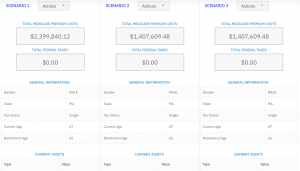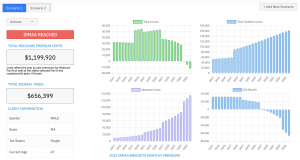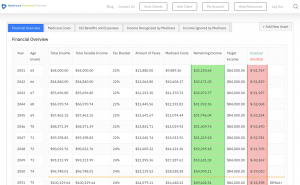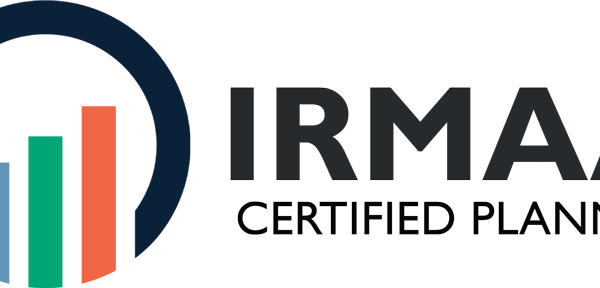Navigating the world of Medicare can feel like learning a new language, especially with all the talk surrounding 2025 Medicare premiums. What changes are coming? Will costs increase? And most importantly, how will it impact you? Don’t worry, I’ve got you covered. I’ve spent years unraveling the complexities of Medicare and helping people just like you make sense of it all.
As a seasoned professional who assists with healthcare retirement planning, I have insider information about upcoming changes in Medicare. Buckle up, because I’m about to guide you through the ins and outs of what we know so far. You’ll learn about potential surprises regarding costs, supplemental benefits, and how these changes could impact your wallet in 2025.
What Impacts Medicare Premiums Each Year?
Medicare premiums are notoriously tricky and rarely stay the same yearly. Before diving into the specifics of 2025, let’s break down the key factors that typically influence how these premiums are calculated:
Inflation Rates
As inflation rises, the price of nearly everything goes up, and Medicare is not immune to those pressures. For example, when calculating the 2025 IRMAA brackets, Healthcare Retirement Planner considered whether the average Consumer Price Index for the current year (ending August) exceeds that same period the year before.
Healthcare Costs
Premiums help cover the cost of your healthcare services. When those costs increase, you often see an increase reflected in your Medicare premiums.
Government Funding and Legislation
The government significantly impacts Medicare’s direction. The policies put forth in the CY 2025 MA and Part D proposed rule can lead to adjustments impacting overall payments, potentially causing fluctuations in your monthly premiums.
Medicare Advantage in 2025: A Look at the Proposed Changes
You’ve likely heard of Medicare Advantage, also known as Medicare Part C. While still a few years out, these Medicare Advantage plans see some notable proposed adjustments in 2025:
Increased Payments to Plans, But What Does That Mean for You?
The Centers for Medicare & Medicaid Services (CMS) released findings related to projected increases for 2025 Medicare Advantage plan payments – a proposed 3.7% amounting to over $16 billion. This signifies notable financial shifts. However, whether these ultimately translate into lower premiums for consumers or bolster plan profits remains to be seen.
Scrutiny on Agent and Broker Incentives
Ever felt pressured into a Medicare Advantage plan by an overly enthusiastic salesperson? The feds have their eye on potentially deceptive marketing practices surrounding Medicare. To curtail this, two major changes are being implemented, aiming to stop brokers and agents from receiving administrative fees above the fixed compensation caps.
This initiative underscores the significance of approaching Medicare choices carefully and prioritizing your individual health needs. Don’t hesitate to do your homework.
Highlighting Unused Benefits
Believe it or not, studies indicate a significant portion of Medicare Advantage enrollees do not utilize their plan’s full spectrum of supplemental benefits. Beginning in 2025, Medicare Advantage plans must proactively notify policyholders of any benefits left untapped.
Imagine overlooking your plan’s dental, vision, or gym membership perks. To avoid missing out on valuable benefits included within your chosen plan, pay close attention to plan communications and utilize what you are entitled to.
Decoding Part D and Prescription Drug Coverage: What Could Change in 2025?
For many, managing medications represents a considerable expense, often riddled with complexities thanks to Part D prescription drug coverage. In the constantly changing world of 2025 Medicare premiums, prescription drug coverage continues evolving. Here’s what’s potentially on the horizon for Medicare Part D and how it affects the cost of prescription medications:
Out-of-Pocket Spending Limit: A Welcome Change
A new out-of-pocket spending cap of $2,000 will be put on prescriptions. Thankfully, the Medicare prescription drug plan cap will be indexed to align with Part D cost increases to combat the impact of inflation. This shift, according to a February 2024 Kaiser Family Foundation brief, could mean those of us relying on pricier, brand-name prescriptions might end up keeping more hard-earned money in our pockets come 2025.
However, it’s important to prepare for potential increases elsewhere in Part D plans, such as premiums or co-pays, to offset these lowered out-of-pocket maximums.
Emphasis on Plan Comparisons and Informed Decisions
As any Certified Financial Planner™ specializing in Medicare will tell you, reviewing your Medicare Part D plan during the annual enrollment period is more important than ever. That $2,000 cap might sound enticing. Still, it potentially causes insurers to narrow their list of covered prescriptions, tighten restrictions on specific medications, and raise those pesky Part D premiums we just talked about.
Navigate these changes by actively using the helpful Medicare Plan Finder tool I frequently mention. This resource simplifies finding plans and compares coverage, ensuring you get the medication you need without busting your budget.
IRMAA: What You Earn Can Impact Your Part D Premiums
IRMAA, which stands for Income Related Monthly Adjustment Amount, can be confusing, even to those of us well-versed in the details of 2025 Medicare premiums. You might be thinking, how do my 2023 taxes impact my Medicare in 2025? The quick explanation is that if your income surpasses a certain threshold, the dreaded IRMAA surcharge could apply, adding to your Part B and Part D premiums.
The IRMAA brackets adjust based on income levels outlined on your tax return and factor in inflation as measured by the Consumer Price Index (CPI). So, stay informed. Understanding the implications of IRMAA proves crucial for successful retirement financial planning.
Expert Predictions: Navigating Potential Medicare Premium Trends in 2025
Accurately forecasting the future cost of 2025 Medicare premiums involves considering variables such as the volatile economy, changing political landscapes, and increasing healthcare utilization patterns. This is no simple task. Let’s analyze what the experts predict based on available data:
The Case for Increased Medicare Costs
The esteemed Medicare Payment Advisory Commission (MedPAC) estimates that, in 2024 alone, MA plans will cost 123% of the cost of Original Medicare. This could inflate Part B premiums, costing the American people billions more each year. With estimates like this, preparing for potential cost surges across both traditional Medicare and the wildly popular Medicare Advantage programs seems almost inevitable.
The Impact of Rising Drug Costs and Potential Policy Changes
The increasing prices of prescription drugs place constant strain on Medicare’s financial well-being. Couple that with legislative agendas prioritizing the bolstering of the Medicare program and an urgency to promote transparency within its market; one thing becomes glaringly obvious: those 2025 Medicare premiums represent a crucial point in this constantly evolving program.
It is imperative for individuals approaching retirement or relying upon this vital program to understand that keeping yourself educated on these intricate dynamics is key to navigating these uncharted waters and making informed decisions. I cannot emphasize enough the importance of staying vigilant, actively seeking professional guidance, and taking the time to review your coverage options carefully.
FAQs about 2025 Medicare Premiums
FAQ 1: How much will Medicare premiums be in 2025?
While exact numbers are currently unavailable (the announcement typically occurs in the Fall) projections indicate possible premium increases due to inflation, expanding healthcare expenses, and changes in the program. I recommend individuals utilize helpful resources such as the Medicare.gov website for updates on this information.
FAQ 2: What are the changes coming to Medicare in 2025?
Key proposed modifications to Medicare in 2025 include heightened regulations on incentives given to Medicare Advantage plan salespeople, mandated mid-year notifications revealing unused benefits in those same plans, plus an implemented $2,000 annual cap specifically targeting prescription drug costs. It’s important to acknowledge that modifications to Medicare are a continuous occurrence.
To stay well-informed about your Medicare benefits, I strongly advise routine checkups regarding program updates. These are accessible through Medicare.gov or through reliable sources like the Kaiser Family Foundation.
FAQ 3: What is the Medicare payment proposal for 2025?
The Medicare payment proposal for 2025 shows a significant rise in payments, largely aligning with the advance notice. This ultimately suggests potential impacts on Medicare Advantage plan availability and features. Staying updated is crucial.
FAQ 4: What is the CMS rate for 2025?
Although definitive 2025 CMS rates remain under wraps for now, experts anticipate increases, influenced by variables like healthcare cost trends and those legislative adjustments we discussed. Remaining vigilant and updated is crucial. Turn to trusted sources like the Medicare Rights Center for ongoing developments.
Conclusion
Remember, successfully planning for healthcare costs during your golden years means being proactive. Understanding the intricacies of 2025 Medicare premiums empowers you to make smarter financial decisions. With everything from proposed payment adjustments and new regulations targeting agents to the focus shifting toward highlighting those unused benefits – staying informed can make all the difference.
Table of Contents:
Streamlining the Medicare Surcharge Calculation Process.
Our Healthcare Retirement Planner software is designed to streamline the retirement planning process for financial professionals. By providing an efficient way to calculate IRMAA costs, our tool helps you save time and focus on other aspects of your clients’ retirement plans.
- Faster calculations: Our software quickly calculates IRMAA costs based on your client’s income and tax filing status, eliminating manual calculations and potential errors.
- User-friendly interface: The intuitive design of our platform makes it easy for financial professionals to input data and generate results with minimal effort.
- Data integration: Seamlessly integrate our calculator into your existing financial planning tools or CRM systems for a more streamlined workflow.
- Easy to Understand Reports: Export reports to easily share with your clients
- Tax and Surcharge Modeling: see how different types of income affects both taxes and your surcharges.
In addition to simplifying the calculation process, using our Healthcare Retirement Planner can also help improve communication between you and your clients. With clear visuals that illustrate how IRMAA costs impact their overall retirement plan, you can effectively convey complex information in an easily digestible format. This enables clients to make informed decisions about their healthcare expenses during retirement while ensuring they are prepared for any potential changes in Medicare premiums due to income fluctuations. To learn more about how our software can benefit both you as a financial professional and your clients’ retirement planning experience, visit the features page. Streamlining retirement planning processes can help financial professionals save time and resources, allowing them to focus on other areas of their clients’ needs. Automated calculation of IRMAA costs is the next step in streamlining this process even further.






